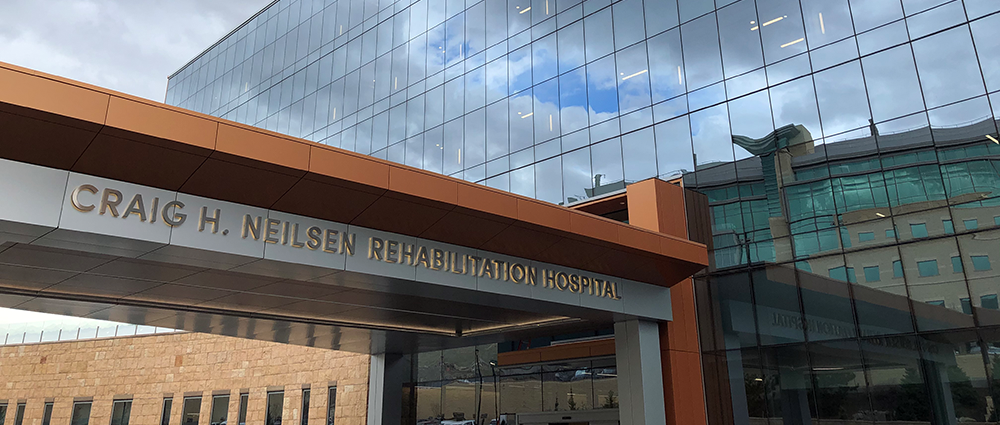Completing a building like the new Craig H. Neilsen Rehabilitation Hospital in the best of circumstances is a massive undertaking. Years of work and millions of dollars go into these projects. It can sometimes feel like trying to juggle… while riding a unicycle… on the rim of the Grand Canyon.
It was no different for the team working on the Neilsen Rehabilitation Hospital, but the building was getting close to opening so there was light at the end of the tunnel. Unfortunately, the light turned out to be a train as the COVID-19 pandemic hit, with an earthquake thrown in for good measure.
So what went through the minds of those whose job it was to finish this landmark building?
“HURRY!!” recalls Kathy Sirrine, one of the project managers working on the Neilsen Rehabilitation Hospital. “And lots of questions: What has to be done to see patients? How fast can we get it done? Can we still work in the building? How do we work in the building? What is the building going to be used for and how does that change what we can or should do? In asking these questions we were met with a lot of ‘I’m not sure, just do the best that you can, stay in close communication.’”
“The project was progressing nicely to an exciting grand opening & ribbon cutting event in May, followed by moving into the building,” adds Mike Wessman, also a project manager. “It was disappointing when I realized that the celebratory event would not be possible due circumstances surrounding COVID-19.”
The scramble that COVID-19 caused across healthcare meant that hospitals were trying to prepare for an anticipated surge of patients. The need for space and equipment meant that the unfinished Neilsen Rehabilitation Hospital was being considered as a place to put non-COVID patients who the pandemic displaced.
“When the pandemic started to ramp up, we immediately started to look at what work needed to be completed to open up just the inpatient floors of the building, and focused efforts on those areas,” says Sirrine. “In early March, we started to get requests from senior leaders to open the building early, and possibilities of opening portions of it for functions other than rehab, if needed to respond to a possible surge.
“At this same time requests came for lists of equipment we have on hand that could be reallocated for the pandemic. We released all of the ventilators, defibrillators, and suction equipment to the pandemic efforts, where they remain to date.”
As of this writing, the COVID-19 pandemic is still a concern, but within University Hospital’s ability to react. So, the decision was made to officially open up Neilsen Rehabilitation Hospital on May 28, 2020.
Although not the opening that anyone anticipated (grand opening celebrations will have to wait for another day), finishing this project is a remarkable accomplishment. It came through the hard work and dedication of everyone on the team, from construction workers and project managers to physicians and senior leadership.
“Each day was filled with questions and possibilities, but direction and work effort remained; keep going and do the best you can,” Sirrine explains. “I soon realized that we were all in the same boat of trying to stay calm, stay safe, plan for the worse, not knowing what that might be—accompanied with some fear in seeing what [COVID-19] was becoming in other areas of the country—but to keep working, pushing forward as quickly as we can and stay flexible for changes.
“It’s been an interesting time of anxiety, and then—oddly—calmness as you see things working, and people and the building coming together.”
“It’s an exciting experience to see the finishing touches being completed,” says Wessman. “The Neilsen Rehabilitation Hospital is a beautiful building, but even more beautiful is the wonderful care that patients will receive from the committed team who will work in the building.
“The same exceptional care that has long been provided in the aged school of medicine facility now has an exceptional physical environment for patients and their loved ones to enjoy. I look forward to this enhancing their experience and also for some of the cutting-edge technologies to benefit people and their recovery process.”
